19/05: Day 1 Exploring the Orkney Islands
Category: General
Posted by: The Agnew Family
We took the ferry from Scrabster to Stronmess on Mainland, the largest of the Orkney Islands. We spent the day visiting several ancient sites as well as the tidal island of Brough of Birsay.
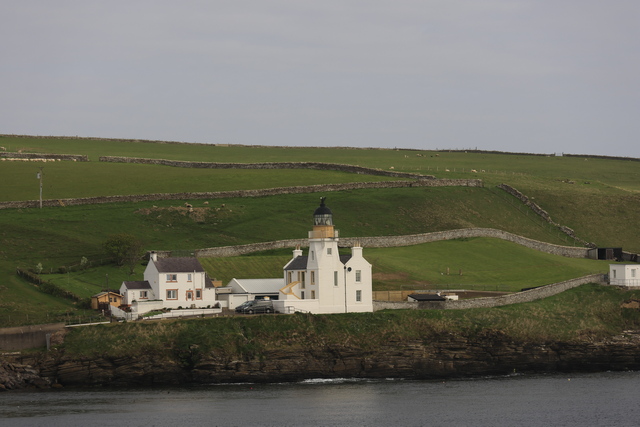
The lighthouse in Scrabster. Goodbye mainland.
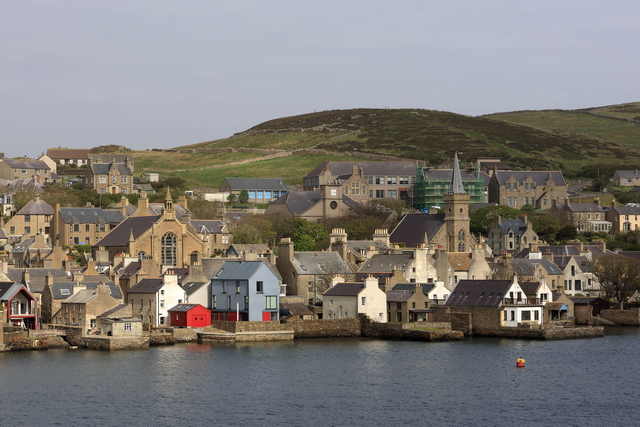
The village of Stromness Orkney. Hello Mainland --- that's the name of this island in Orkney.
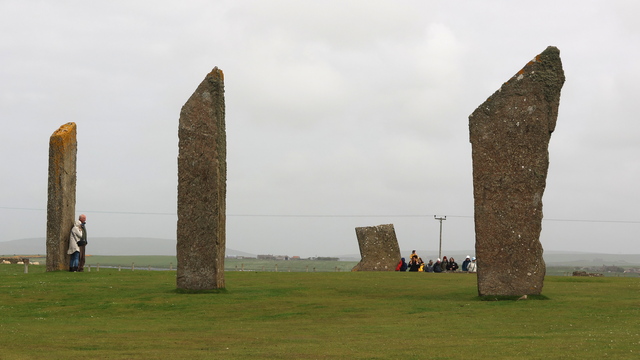
The Standing Stones of Sterness are over 5000 years old and may be the earliest henge monument in the British Isles. The enormous Stones of Stenness are all that remains of a great stone circle on an ancient ceremonial site.
The Stones of Stenness today consist of four upright stones up to 6m in height in a circle that originally held 12 stones. The focus of the interior was a large hearth. The stones were encircled by a large ditch and bank, the form of which has been lost over time by ploughing. Thanks Historic Environment Scotland. I'll be using you a lot today.
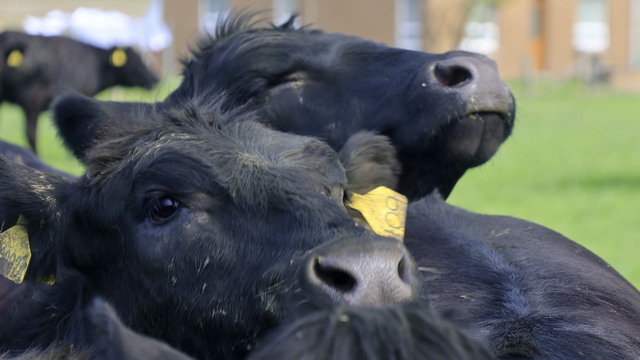
Cows greeting us at the Maeshowe visitors centre.
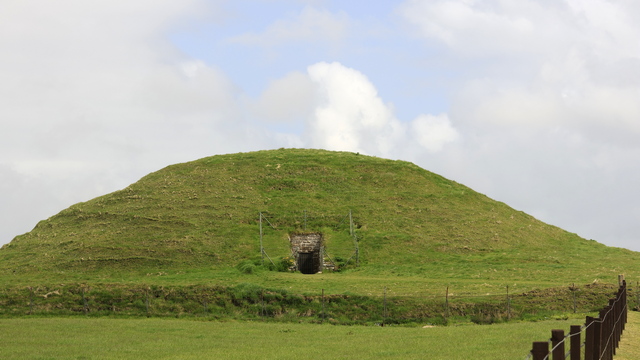
Maeshowe Chambered Cairn. Maeshowe, a monumental chambered tomb, is the finest Neolithic building to survive in north-west Europe. Built around 5,000 years ago, it is a masterpiece of Neolithic design and construction – not least because of its use of massive stones.
Creating such a huge building must have been a major challenge for our remote ancestors, working without metal tools or powered machinery. It also clearly shows a tremendous social commitment.
From the outside, Maeshowe looks just like a large grassy mound. (The word ‘howe’ comes from the Old Norse for ‘hill’.) To appreciate its size and significance, visitors must enter Maeshowe, stooping to walk its long passageway to reach the central, stone-built chamber.
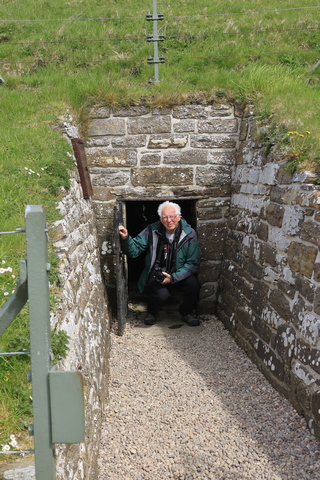
Ed exitting Maeshowe.
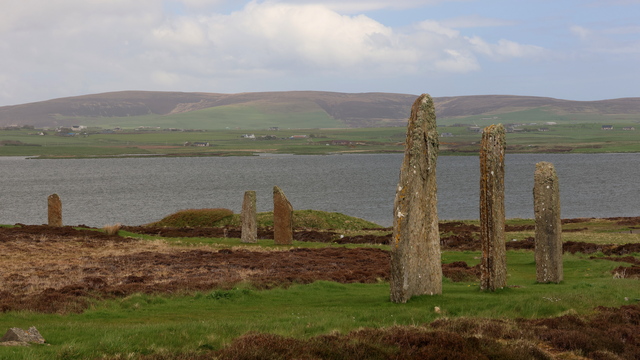
The Ring of Brodgar Stone Circle and Henge is an enormous ceremonial site dating back to the 3rd millennium BC. The Ring of Brodgar comprises:
A massive stone circle, originally consisting of 60 stones – 36 survive today
At least 13 prehistoric burial mounds
A large rock-cut ditch surrounding the stone circle
The age of this site is unknow as it hasn't been excavated. The three sites I've mention so far very close. A 4th site, the Ness of Brodgar is only open for a short time in the summer. The Ness of Brodgar site has been under excavation since 2004, revealing a massive complex of monumental Neolithic buildings dating from the centuries around 3000BC.
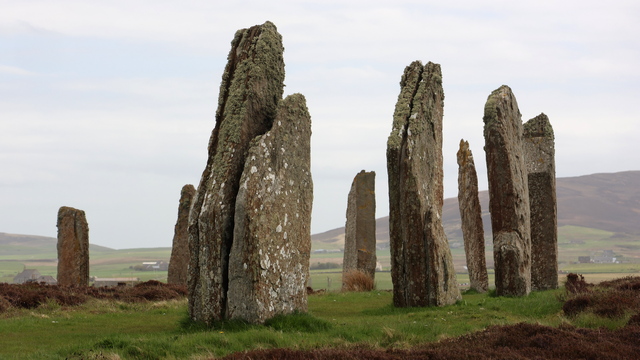
Ring of Brodgar
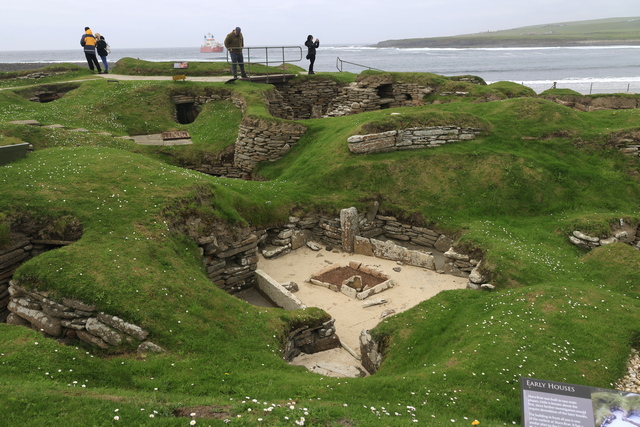
Skara Brea was discovered in the winter of 1850 when a storm ripped the grass and dirt of a large mound revealing buildings. Skara Brea is over 5000 years old.
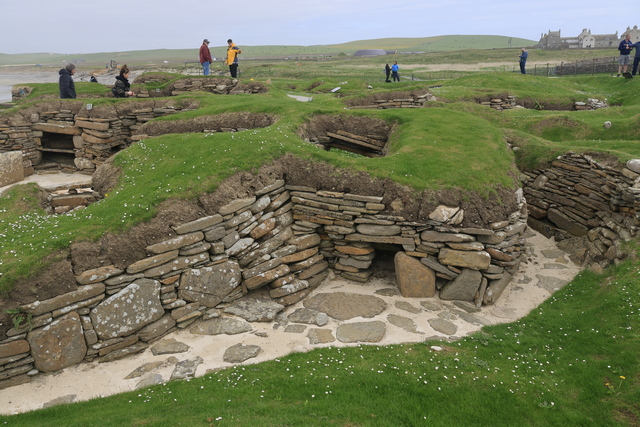
Skara Brae is remarkable because of its age, and even more so for the quality of its preservation. Its structures survive in impressive condition – as does, incredibly, the furniture in the village houses. Skara Brae was originally an inland village beside a freshwater loch. All of the houses were:
well built of flat stone slabs
set into large mounds of midden
linked by covered passageways
Each house has a single room, its floor space roughly 40sq m.
‘Fitted’ stone furniture in each room includes:
a ‘dresser’ – perhaps to store and display special objects
two box-beds
a central hearth
small tanks set into the floor – possibly for preparing fish bait
A larger structure at one end of the village has a special hearth and no box-beds, so may have been a workshop.
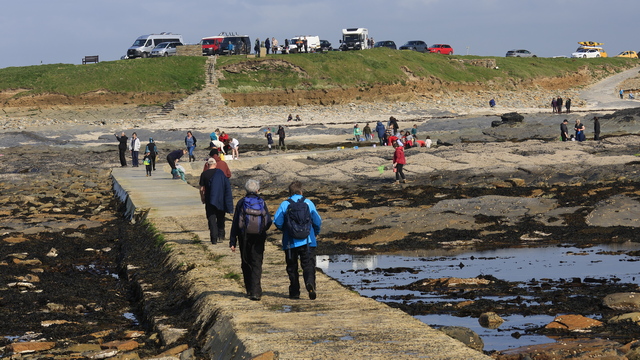
The Brough of Birsay is a tidal island, which means you can walk out to it during low tide. It's a popular place. I think a lot of the people were locals as there were lots of kids in wellies with nets looking for crabs and other interesting things.
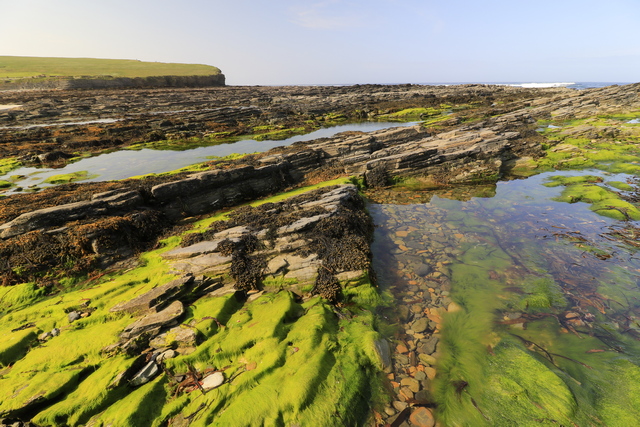
The rocks after the tide went out.
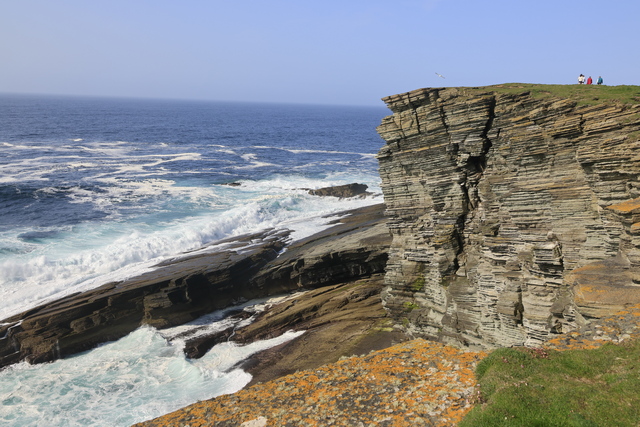
The rocky coast at the far end of the Brough of Birsay ear the lighthouse.
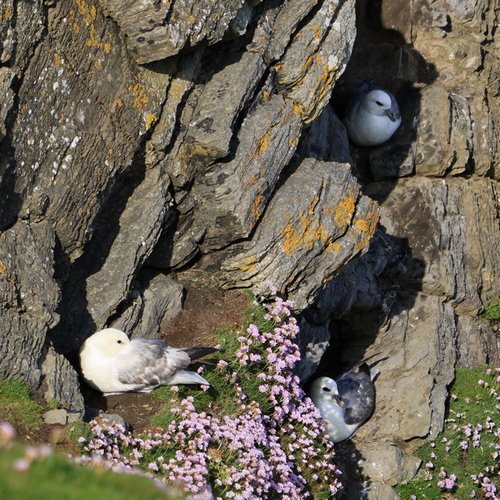
Nesting birds.
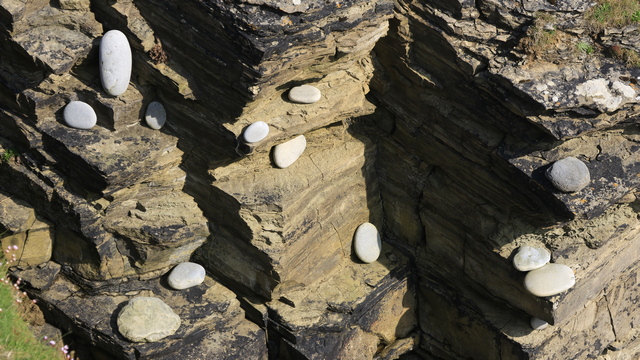
Looking down, these stones are sitting on rock ledges. The waves move these large stones around.
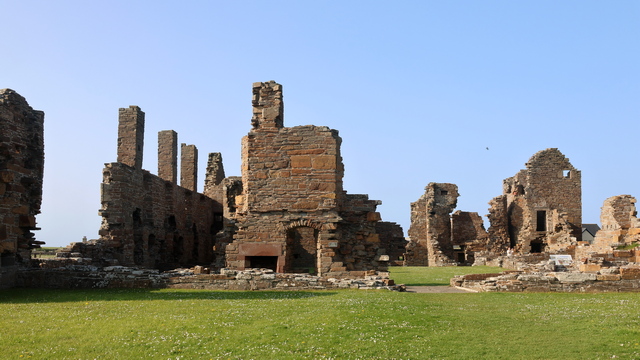
Earl's Palace, Birsay. Robert Stewart was the illegitimate son of James V by his mistress Euphemia Elphinstone and half-brother to Mary Queen of Scots. He was granted the royal and earldom estates of Orkney and Shetland in 1564, but not the title itself.
Robert Stewart moved north and between 1569 and 1574 he built the Earl’s Palace at Birsay at the north of the Orkney mainland. His nephew, James VI, created him Earl of Orkney, Lord of Shetland and Knight of Birsay in 1581.

The lighthouse in Scrabster. Goodbye mainland.

The village of Stromness Orkney. Hello Mainland --- that's the name of this island in Orkney.

The Standing Stones of Sterness are over 5000 years old and may be the earliest henge monument in the British Isles. The enormous Stones of Stenness are all that remains of a great stone circle on an ancient ceremonial site.
The Stones of Stenness today consist of four upright stones up to 6m in height in a circle that originally held 12 stones. The focus of the interior was a large hearth. The stones were encircled by a large ditch and bank, the form of which has been lost over time by ploughing. Thanks Historic Environment Scotland. I'll be using you a lot today.

Cows greeting us at the Maeshowe visitors centre.

Maeshowe Chambered Cairn. Maeshowe, a monumental chambered tomb, is the finest Neolithic building to survive in north-west Europe. Built around 5,000 years ago, it is a masterpiece of Neolithic design and construction – not least because of its use of massive stones.
Creating such a huge building must have been a major challenge for our remote ancestors, working without metal tools or powered machinery. It also clearly shows a tremendous social commitment.
From the outside, Maeshowe looks just like a large grassy mound. (The word ‘howe’ comes from the Old Norse for ‘hill’.) To appreciate its size and significance, visitors must enter Maeshowe, stooping to walk its long passageway to reach the central, stone-built chamber.

Ed exitting Maeshowe.

The Ring of Brodgar Stone Circle and Henge is an enormous ceremonial site dating back to the 3rd millennium BC. The Ring of Brodgar comprises:
A massive stone circle, originally consisting of 60 stones – 36 survive today
At least 13 prehistoric burial mounds
A large rock-cut ditch surrounding the stone circle
The age of this site is unknow as it hasn't been excavated. The three sites I've mention so far very close. A 4th site, the Ness of Brodgar is only open for a short time in the summer. The Ness of Brodgar site has been under excavation since 2004, revealing a massive complex of monumental Neolithic buildings dating from the centuries around 3000BC.

Ring of Brodgar

Skara Brea was discovered in the winter of 1850 when a storm ripped the grass and dirt of a large mound revealing buildings. Skara Brea is over 5000 years old.

Skara Brae is remarkable because of its age, and even more so for the quality of its preservation. Its structures survive in impressive condition – as does, incredibly, the furniture in the village houses. Skara Brae was originally an inland village beside a freshwater loch. All of the houses were:
well built of flat stone slabs
set into large mounds of midden
linked by covered passageways
Each house has a single room, its floor space roughly 40sq m.
‘Fitted’ stone furniture in each room includes:
a ‘dresser’ – perhaps to store and display special objects
two box-beds
a central hearth
small tanks set into the floor – possibly for preparing fish bait
A larger structure at one end of the village has a special hearth and no box-beds, so may have been a workshop.

The Brough of Birsay is a tidal island, which means you can walk out to it during low tide. It's a popular place. I think a lot of the people were locals as there were lots of kids in wellies with nets looking for crabs and other interesting things.

The rocks after the tide went out.

The rocky coast at the far end of the Brough of Birsay ear the lighthouse.

Nesting birds.

Looking down, these stones are sitting on rock ledges. The waves move these large stones around.

Earl's Palace, Birsay. Robert Stewart was the illegitimate son of James V by his mistress Euphemia Elphinstone and half-brother to Mary Queen of Scots. He was granted the royal and earldom estates of Orkney and Shetland in 1564, but not the title itself.
Robert Stewart moved north and between 1569 and 1574 he built the Earl’s Palace at Birsay at the north of the Orkney mainland. His nephew, James VI, created him Earl of Orkney, Lord of Shetland and Knight of Birsay in 1581.